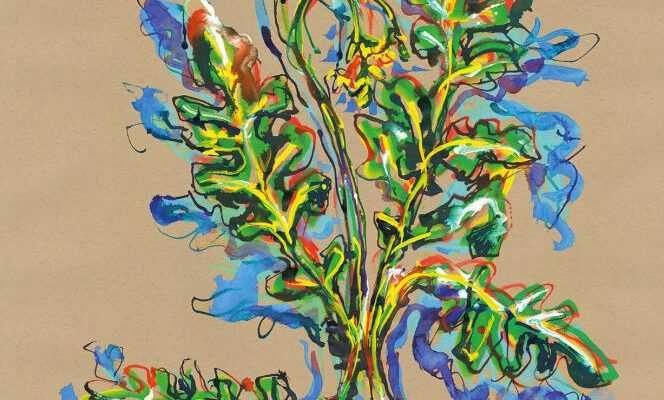Generally considered a salad, arugula is part of the Brassicaceae family, just like cabbage, mustard or radishes. White arugula (Diplotaxis erucoides) grows wild throughout southwestern Europe, especially among vineyards. The yellow arugula or “false arugula”, Diplotaxis tenuifolia, present in southern and central Europe and now widely cultivated in Italy, tends to replace “real arugula”, Eruca vesicaria (wild) or Eruca sativa (cultivated), which is also native to the Mediterranean area, and from Central Asia to Afghanistan.
The Taste of M
We can distinguish the “false” (which the Italians call ruchetta) by its thick leaves with a narrow and pointed lobe and its more pungent taste, while the “real” (rucola in Italy) has thinner, wider and rounded leaves, and a more subtle taste. It has many virtues: cleansing, stimulating, rich in minerals and vitamin C … In the garden, arugula is hardy, and grows very easily. It is sown in line and in the ground from March to September, and can be harvested, over time and growth, from spring to winter.
In salad
Consumed mostly raw and whole in Western Europe, arugula is also cultivated as an oilseed crop in Central Asia and Northern India, to produce oil. In the Mediterranean area, it is often integrated with mesclun (“mixture” in Provençal), associated with other lettuce shoots, greens and herbs, the composition of which varies according to the seasons. It deserves to be accompanied by a hint of balsamic vinegar, which counterbalances its spiciness.
In herbs
Appreciated for its spicy flavors and its nutty aftertaste, arugula embellishes and refreshes pizzas, savory pies or pancakes, but also a pasta dish, ravioli, risotto, meat. It is the perfect winter substitute for basil, for a lively and tasty pesto. It can be cooked and mixed into a tangy soup, with a little fresh goat cheese. In Ischia (Gulf of Naples), it is even made into a digestive alcohol, the rucolino.
